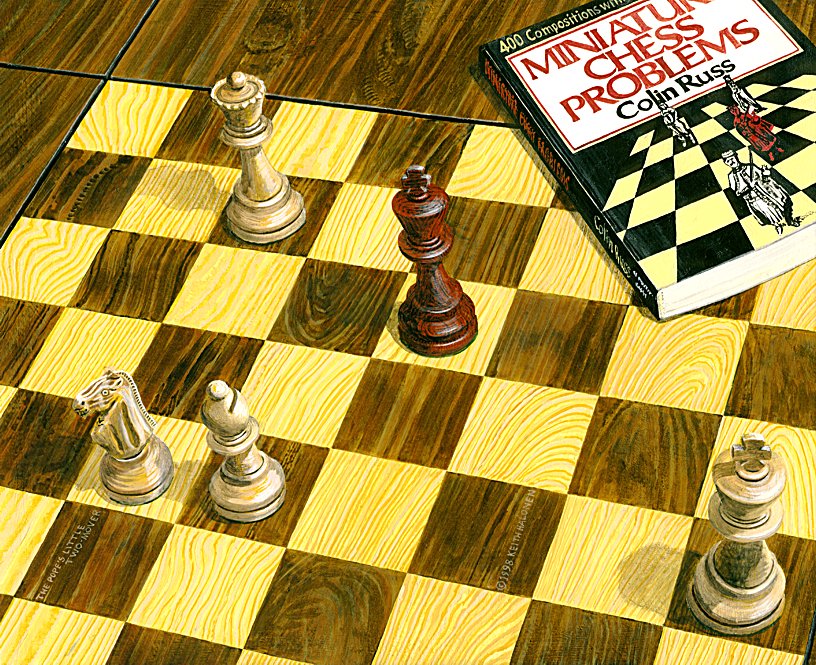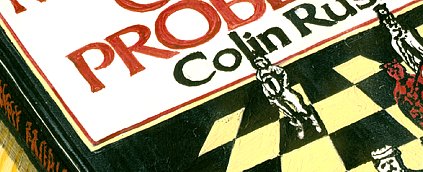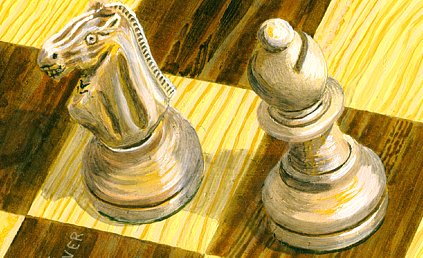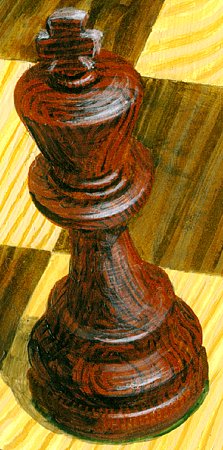|
|

|
|
THE POPE'S LITTLE TWO-MOVER
© 1998 Keith Halonen oil on panel 10×8 in / 25×20 cm $ 3,500 US |

|
« CLICK to contact the artist |





|
CLICK » to order this print |

|
|
YOU ARE IN THE CHESS PAINTINGS GALLERY
CLICK THE SHORTCUT ICONS ABOVE TO VIEW MORE PAINTINGS |
|
A miniature is a problem having seven or fewer pieces total. This one is also a two-mover, meaning White and then Black each make a first move, after which White's second move must checkmate Black. The solver determines the correct first move for White, known as the key move. There can be only one correct key move. If Black has escaping resources after White's second move, the first move was incorrect. Viewed from White's vantagepoint the upper left square is a8.
This problem is attributed to former WWII tank commando Karol Wojtyla, nephew of famed Polish problem composer M. Wröbel. Wojtyla later became Pope John-Paul II. There are several problems attributed to him but it cannot be asserted with any authority that he actually authored them. My late friend George Koltanowski claimed to have played a late-night game of chess with His Holiness during a visit to San Francisco's St. Mary's Cathedral, which is located within short walking distance of Kolty's former residence. My best guess is that, like many Europeans, the Pope doubtless played chess. How well he played is known only to his living opponents. There are quite a few fraudulent problems and at least one fake game score attributed to John-Paul II. This problem appears in Colin Russ' book Miniature Chess Problems, St. Martin's Press 1981, seen in the painting. Apologies to all who expected to read the solution here. That would be a disservice to Mr. Russ and his publishers. With so few pieces involved the solution should not be too difficult. |
 
|

|
|
|
Detail from THE POPE'S LITTLE TWO-MOVER
|
|
A friend carefully scrutinized this painting and its companion piece The Pope's Big Two-Mover. She commented, "It was clever of you to allow the wood grain of your panel to show through the paint." I pointed out that the support panel is composite hardboard that actually has no grain.
"But I can see the grain," she protested, and proceeded to argue the issue with me. Unwilling to accept my claim, she invited me to have a closer look at my own panel. I looked and finally realized she was misinterpreting the barely perceptible thickness of my finest brushstrokes which intentionally emulate the appearance of wood grain. After all, I paint realism! I carefully explained it to her and thanked her. Her stubborn insistence was a genuine tribute to my painting technique. |
———————— GALLERIES ————————









|